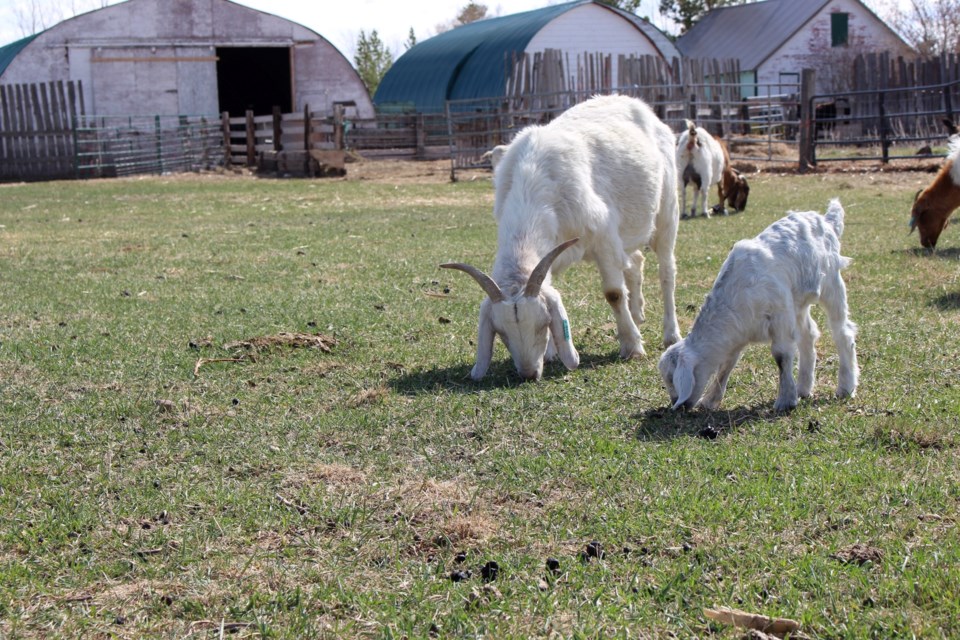Targeted grazing is a practice where select livestock species are used to control the spread of unwanted vegetation such as noxious weeds or woody plants. With animal species such as sheep and goats, farmers can control vegetation while reducing the need for chemical herbicides, and government assistance may be available for some producers.
Targeted grazing adds another tool to the weed control toolbox that includes mechanical, chemical, and biological measures, along with controlled burns. The practice gives the option to implement a chemical-free approach to control vegetation when herbicide applications are environmentally unfeasible, a large infestation is too expensive to treat, or the area is inaccessible.
The aim is to reduce the competitive advantage of targeted plant species. Small ruminants such as sheep and goats can effectively suppress wide infestations, while at the same time being selective in their grazing choices.
Recently, there has been a reported increase in the number of Saskatchewan-based producers expressing an interest in using targeted grazing to control weed species and the encroachment of shrubs in select areas.
“Targeted grazing may not be suited to every situation, making an annual plan for management and returning to the location for monitoring very important,” noted Kaitlin Burns, an agri-environmental specialist with the Ministry of Agriculture.
Suitable livestock species are divided into three categories: bulk feeders, selective feeders, and intermediate feeders.
Bulk feeders such as cattle, horses, and bison prefer grass-based diets, flatter terrain close to water, and are less selective in their diet. Selective feeders such as goats prefer broad-leaved plants and shrubs, steeper terrain, and are less susceptible to toxins. Intermediate feeders such as sheep will eat grass, broad-leaved plants, and shrubs.
All managerial actions come with associated costs. These expenses are influenced by the approach being used, specific products in use, the scale of the infestation, and relevant post-application considerations.
Targeted grazing programs will have additional costs associated with the provision of supplemental feed for the animals, as well as costs for water and shelter. Additionally, there may be costs associated with the movement or protection of these animals, which includes fencing, hiring an outside herder, or costs associated with guardian dogs.
Under the Resilient Agricultural Landscapes Program (RALP), funding options are available to assist producers who opt for targeted grazing practices to manage large-scale invasive plant infestations.
The Targeted Grazing Beneficial Management Practice (BMP) is a cost-sharing program for 50 per cent of eligible costs to a maximum of $50,000 per year. Multi-year applications are available through the program.
“This is a pre-approval application, so applicants should discuss their project with their local agri-environmental specialist prior to starting the work,” wrote Burns. The Targeted Grazing BMP is under RALP and has the same eligibility requirements as other Sustainable Canadian Agricultural Partnership (CAP) programs.
For more information on the Targeted Grazing BMP, visit the Agriculture Knowledge Centre at 45 Thatcher Drive East or call 1-866-457-2377.
In response to some providers blocking access to Canadian news on their platforms, our website, MooseJawToday.com will continue to be your source for hyper-local Moose Jaw news. Bookmark MooseJawToday.com and sign up for our free online newsletter to read the latest local developments.




